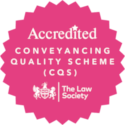- Telephone 01242 574244
- Fax 01242 221631
- Email info@hughes-paddison.co.uk
The Family Justice Council has released an interim guidance note around conflicts of interest when instructing expert witnesses in Parental Alienation cases.
Unfortunately, Parental Alienation is often cited as a reason why a parent isn’t having contact with their child(ren) or hasn’t seen their child(ren) in some time. This becomes a very distressing situation for parents who feel they are being alienated from their child(ren).
What is Parental Alienation?
Parental Alienation hasn’t been formally defined by the Courts and can be interpreted in many ways. According to CAFCASS (Children and Family Court Advisory and Support Service), Parental Alienation is a “series of behaviours to describe circumstances where there is an ongoing pattern of negative attitudes, beliefs and behaviours of one parent that have the potential or expressed intent to undermine or obstruct the child’s relationship with the other parent.”
There are multiple different ways and types of behaviours a parent could exhibit that could amount to Parental Alienation. In a 2020 article written for the Family Court Review, Drs Johnston and Sullivan give a summary of behaviours that could amount to Parental Alienation. These are:
- Negative attitudes, behaviours and beliefs that denigrate, demean, vilify, malign, ridicule or dismiss the child(ren)’s other parent;
- Conveying false beliefs and stories.
Most people would assume that Parental Alienation would only amount to negative language and behaviours to impact the child(ren)’s view of their parent but according to Drs Johnston and Sullivan, withholding positive information about the other parent and a lack of positive attitudes and behaviours also reinforces the negative picture that is being painted about that parent.
CAFCASS has also included the following as behaviours that can amount to Parental Alienation: spurning, terrorising, isolating, corrupting or exploiting and not responding appropriately to the child’s emotional needs.
One parent’s treatment of the other parent in front of the child(ren) can negatively affect the relationship the parent has with the child(ren). It can frame that parent in a negative light and impact the quantity and quality of time the child(ren) spends with the parent. Contact between the parent and the child(ren) will become strained and the parent being alienated will have to work with their child(ren) to bridge the gap that is being created. The child(ren)’s impression of that parent will ultimately be impacted and could view them in a harmful way.
The Court’s Presumption of Parental Involvement
The Child and Families Act 2014 inserted Section 1(2A) into the Children Act 1989 creating a presumption in the Family Courts that, unless shown otherwise, parents should have an involvement in the life of the child. The Family Courts will be concerned with the alienation of one parent as the Court will be mindful of the presumption that both parents should be involved in the children’s life.
That being said, the Court’s primary obligation and consideration will be the welfare of the child(ren). The Court will look at any welfare concerns surrounding the child(ren) having contact with any parent and will apply the Welfare Checklist in Section 1(3) of the Children Act 1989.
The Court will also look at Section 1(6) of the Children Act 1989 when looking at the presumption of parental involvement which states a parent can be involved in the child’s life in a way that does not put the child at risk of suffering harm and unless there is some evidence before the Court in the particular proceedings to suggest that involvement of that parent in the child’s life would put the child at risk of suffering harm whatever the form of involvement.
The Court will rely on both the presumption of parental involvement and the welfare checklist when considering the amount and type of contact a parent will have with a child. This is especially the case when there is Parental Alienation. The case of Re D (A Child) in 2017 stated that a child “splitting their time between two homes which are antagonistic and unsupportive of both parents is not within the best interest or welfare of the child.”
Is there a Presumption of Shared Care?
Although there is a presumption of parental involvement in a child’s life, this does not translate to a presumption in shared care. Currently, there is no automatic right for shared care in the Family Courts.
Shared care orders are an option the Courts have but it is not the starting presumption of the Court. A review conducted in 2011 by the Family Justice Review specifically did not recommend a change to the Children Act 1989 to add a presumption of shared care. They stated that “a change in legislation that might risk creating an impression of a parental right to any particular amount of time with a child would undermine the central principle of the Children Act 1989 that the welfare of the child is paramount.”
A Shift in Shared Care Orders
Although there isn’t an automatic presumption for shared care, there has been a shift in the Family Courts and Judges have increasingly made more shared care orders over the last few years.
Since there is a presumption that both parents should have an involvement in the child(ren)’s life and if there are no welfare concerns with either parent spending time with the children, a shared care order would be an appropriate option for the Court to consider.
Should I make an Application to the Family Court?
If you feel that you are not able to have contact with your child(ren) or feel that your contact is being impacted by the behaviours of the other parent, you may want to consider making an application to the Family Court to clearly define the contact you have with your child(ren).
If you need help with making an application for contact or would like to know more about our parental rights, please feel free to contact Julie Bennett
The information contained on this page has been prepared for the purpose of this blog/article only. The content should not be regarded at any time as a substitute for taking legal advice.




Comments